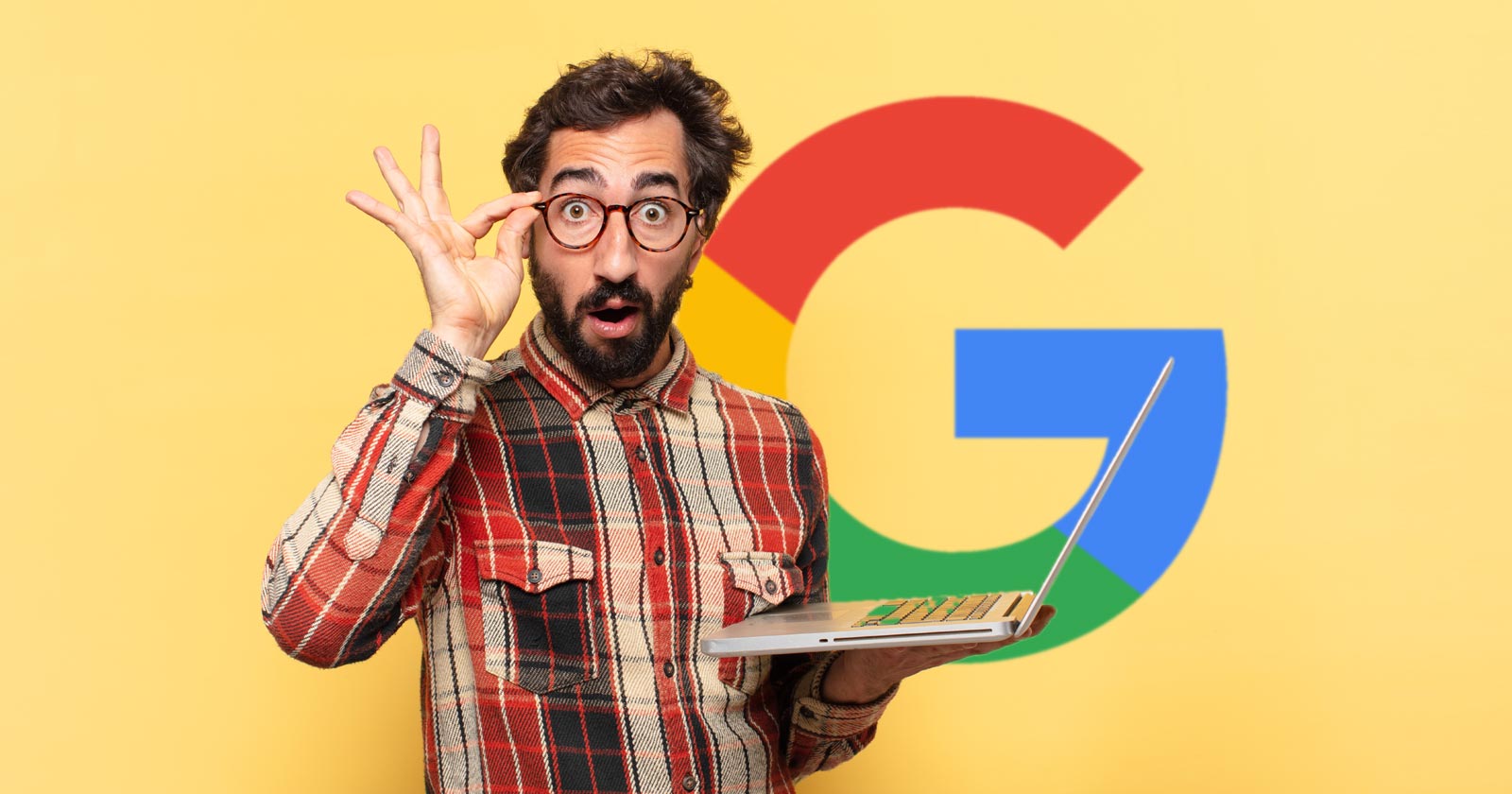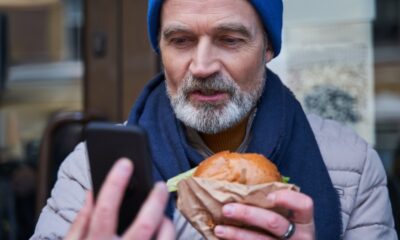SEO
9 Creative Ways To Use Google’s Keyword Planner Tool
One thing that attracts many entrepreneurial-minded spirits to the SEO industry is its dynamic design.
Strategies are changing continuously based on each client’s focus and industry, preventing proverbial cookie-cutter practices.
This is especially true when approaching keyword research.
There are many keyword research tools available, and each requires a unique creative focus to produce the best search opportunities.
For this article, I’ll home in on one tool from the internet Mothership that sometimes gets sidelined for SEO due to its ad-based focus: Google Keyword Planner.
Here, you’ll find nine Keyword Planner research tips that can help you target more profitable terms in organic and paid campaigns.
1. Choose Low Volume, High-Reward Keywords
First and foremost, you want to know which products, services, and keywords deliver the most profit.
With this information, you can create a list of seed keywords to launch your first plan of attack.
Generally, I focus on quality over quantity, which typically equates to low volume over high volume.
For example, one of our clients is an environmental consulting company, so getting someone to convert an organic piece of content for an “SWPPP Plan” could yield that company thousands of dollars in one sale.

As you can see, search competition for many of these keywords is low, and volumes are rising for many relevant keywords in that space.
Due to increasing environmental concerns, keywords like these will continue to grow and make money for whoever captures their organic share.
Bonus Tip: If you’re looking for more accurate keyword volumes, use another keyword planner like Semrush or create a high bid using the max CPC on a keyword to better understand its total volume and monthly impressions.
2. Sort Keywords By Intent
Next, compile a list of keywords for each campaign and sort by intent.
Unfortunately, Google’s Keyword Planner doesn’t provide any filters for intent, such as commercial, informative, or navigational intent.
However, we can glean commercial intent from other keyword phrases by filtering keywords by Top of Page Bid in ascending or descending order.
For example, pages with higher Top of Page Bids typically have highly competitive commercial intent and imply relatively good conversion rates if advertisers are willing to bid so highly on these terms.
 Image from Google Keyword Planner, April 2022
Image from Google Keyword Planner, April 2022
LinkedIn content marketing is a highly sought-after term with lots of competition based on this research.
However, you can flip this list in ascending order to discover keyword terms with greater informational intent.
Using our previous example of “SWPPP Plans,” we find informational keywords with low bids in ascending order.
 Image from Google Keyword Planner, April 2022
Image from Google Keyword Planner, April 2022
Bonus Tip: Using phrases like “buy,” “coupon,” “sale,” etc., will help you separate keywords by commercial intent.
On the other hand, terms like “best practices,” “top,” and question phrases will signify informational intent.
3. Take Keyword Ideas From Competitors
While several competitive research tools are available, including Ahrefs, Semrush, Majestic, etc., you can conduct competitive keyword research right in Google’s Keyword Planner.
In fact, right when you log onto Keyword Planner, they offer options to search for keywords using a seed keyword or a competitor website.
 Image from Google Keyword Planner, April 2022
Image from Google Keyword Planner, April 2022
Google will provide a list of all keywords this website ranks for, and you can filter out keywords by brand name to get a good list of keywords a website is ranking for.
Bonus Tip: Click Organic Average Position in Custom Columns to see where this website ranks for specific keywords to generate ideas for success.
4. Skyscraper Content Using Page-Specific Keywords
You may notice that Google Keywords Planner provides a keyword overview of your competitor’s website and page-specific content in the image above.
If you were searching for topics and keywords for top or mid-funnel content that drives traffic to your website, you could use any of your favorite competitor research tools to see which pages are driving traffic to a website.
Of course, you could also manually input any webpage that your competitor outranks you for and discover other keyword ideas and variations.
For example, using Semrush, I found that this article on alternative search engines pulls in the highest annual traffic for Search Engine Journal.
I can see the most relevant keywords driving traffic to that web page by copying and pasting the link in Keyword Planner.
 Image from Google Keyword Planner, April 2022
Image from Google Keyword Planner, April 2022
You could even bid on these keywords if you’re so inclined, whether you’re marketing an alternative search engine or an awesome piece of content.
Bonus Tip: Conducting page-by-page keyword research, you can discover other keyword variations Google ranks that page for that you otherwise would not have inputted in your content.
5. Satisfy Intent With Keyword Questions
Informative content answers as many user questions as possible.
This provides several advantages for your SEO and content strategy, including:
- Ranking for rich snippet and answer box searches.
- Satisfying user intent.
- Outranking the competition by holding user attention for longer and garnering more clicks.
- Ranking for even more keywords than a broad seed term.
Fortunately, Google’s Keyword Planner provides easy filters to input question phrases, such as “what,” “when,” “where,” “why,” and “how” to help create stellar content that satisfies user intent and educates users.
Bonus Tip: AnswerthePublic is a free tool that provides common user questions in an easily visualized format to help you answer as many questions as possible.
In addition, Google’s answer box and commonly searched results at the bottom provide good indicators of what questions users are researching.
6. Filter By Location
Another great feature of Google’s Keyword Planner is the ability to filter ads and impression shares to specific locations.
Google even lets you filter keyword search volumes down to the city level.
 Image from Google Keyword Planner, April 2022
Image from Google Keyword Planner, April 2022
In addition, you can access search volume data by state or region to find out where most of your traffic and customers originate in Google’s Forecast tab.
For example, below, I looked up the search volume for “SWPPP plans.”
 Image from Google Keyword Planner, April 2022
Image from Google Keyword Planner, April 2022
Using this data, you could create location-specific landing pages for SWPPP plans for California, Texas, Florida, etc.
Bonus Tip: Filtering searches by location also provides a good baseline for the amount of reach local ads on Facebook and other networks will garner.
For example, if most searches are regionally specific, this could help you avoid wasteful spending across all ad platforms.
7. Optimize Keywords By Device
In addition to location and intent, optimizing web pages for different devices is also critical.
I created an ad campaign targeting “roof repair” in the Dallas metro area in the example below.
 Image from Google Keyword Planner, April 2022
Image from Google Keyword Planner, April 2022
Not so surprisingly, most of these searches occur on mobile devices and are most likely done as “near me” searches.
Based on this evidence, optimizing landing pages for mobile devices, inserting a click-to-call CTA, curating a strong brand presence on local directories, and optimizing the Google Business Profile (previously Google My Business) with clear contact information will net the most conversions for most ad campaigns.
Bonus Tip: Understanding which device users search for products allows you to target users on those devices with retargeting ad-based campaigns across social media and other websites.
8. Search For Keywords By Groups
Advertisers mostly use this strategy, but it provides a rich information resource for SEOs and content marketers.
By searching for keywords in Grouped View, instead of Keyword View, Google organizes keywords directly for you by category.
For example, by using the seed phrase “homemade kombucha” and “best kombucha,” you can see the number of keywords and topic ideas generated with two simple keywords.
 Image from Google Keyword Planner, April 2022
Image from Google Keyword Planner, April 2022
By grouping these keywords by category, you could create page-specific content for each group, utilizing each keyword in the group to help optimize your content.
Bonus Tip: If you notice up top, Google provides relevant keyword and topic ideas to expand your marketing efforts further.
9. For the Ads – Remember To Bid On Branded Keywords
Finally, one converting strategy for advertisers is if you’ve run out of keyword ideas, consider bidding on the branded keywords and redirecting user searches to your website.
You can use this strategy genuinely if you sell brand-name products on your website, such as Nike shoes, if you sell apparel, or if you want to gain more clicks for your own branded keywords.
There are several advantages to bidding on branded keywords, including:
- Taking up more SERP real estate.
- Lower costs (for the actual business brand).
- Higher CTRs (especially if it’s your brand).
- Gain greater data about user intent and on-page metrics.
- Build exposure for your brand.
Bonus Tip: You could also bid on competitors’ keywords to be competitive. While this strategy is not foolproof, sometimes it’s a good way to steal away traffic and clicks from competitors.
However, this plan could always backfire, and your competitor could do the same to you.
Google’s Keyword Planner is free to use with a Google Ads account and provides users with most of the tools needed to start keyword research and begin a multi-faceted digital campaign.
Furthermore, what Keyword Planner lacks in functionality can be made up for in third-party tools and a bit of creativity.
More resources:
Featured Image: Nikolay Klimenko/Shutterstock
!function(f,b,e,v,n,t,s)
{if(f.fbq)return;n=f.fbq=function(){n.callMethod?
n.callMethod.apply(n,arguments):n.queue.push(arguments)};
if(!f._fbq)f._fbq=n;n.push=n;n.loaded=!0;n.version=’2.0′;
n.queue=[];t=b.createElement(e);t.async=!0;
t.src=v;s=b.getElementsByTagName(e)[0];
s.parentNode.insertBefore(t,s)}(window,document,’script’,
‘https://connect.facebook.net/en_US/fbevents.js’);
if( typeof sopp !== “undefined” && sopp === ‘yes’ ){
fbq(‘dataProcessingOptions’, [‘LDU’], 1, 1000);
}else{
fbq(‘dataProcessingOptions’, []);
}
fbq(‘init’, ‘1321385257908563’);
fbq(‘track’, ‘PageView’);
fbq(‘trackSingle’, ‘1321385257908563’, ‘ViewContent’, {
content_name: ‘googles-keyword-planner-creative-uses’,
content_category: ‘pay-per-click ‘
});
SEO
Google On Hyphens In Domain Names

Google’s John Mueller answered a question on Reddit about why people don’t use hyphens with domains and if there was something to be concerned about that they were missing.
Domain Names With Hyphens For SEO
I’ve been working online for 25 years and I remember when using hyphens in domains was something that affiliates did for SEO when Google was still influenced by keywords in the domain, URL, and basically keywords anywhere on the webpage. It wasn’t something that everyone did, it was mainly something that was popular with some affiliate marketers.
Another reason for choosing domain names with keywords in them was that site visitors tended to convert at a higher rate because the keywords essentially prequalified the site visitor. I know from experience how useful two-keyword domains (and one word domain names) are for conversions, as long as they didn’t have hyphens in them.
A consideration that caused hyphenated domain names to fall out of favor is that they have an untrustworthy appearance and that can work against conversion rates because trustworthiness is an important factor for conversions.
Lastly, hyphenated domain names look tacky. Why go with tacky when a brandable domain is easier for building trust and conversions?
Domain Name Question Asked On Reddit
This is the question asked on Reddit:
“Why don’t people use a lot of domains with hyphens? Is there something concerning about it? I understand when you tell it out loud people make miss hyphen in search.”
And this is Mueller’s response:
“It used to be that domain names with a lot of hyphens were considered (by users? or by SEOs assuming users would? it’s been a while) to be less serious – since they could imply that you weren’t able to get the domain name with fewer hyphens. Nowadays there are a lot of top-level-domains so it’s less of a thing.
My main recommendation is to pick something for the long run (assuming that’s what you’re aiming for), and not to be overly keyword focused (because life is too short to box yourself into a corner – make good things, course-correct over time, don’t let a domain-name limit what you do online). The web is full of awkward, keyword-focused short-lived low-effort takes made for SEO — make something truly awesome that people will ask for by name. If that takes a hyphen in the name – go for it.”
Pick A Domain Name That Can Grow
Mueller is right about picking a domain name that won’t lock your site into one topic. When a site grows in popularity the natural growth path is to expand the range of topics the site coves. But that’s hard to do when the domain is locked into one rigid keyword phrase. That’s one of the downsides of picking a “Best + keyword + reviews” domain, too. Those domains can’t grow bigger and look tacky, too.
That’s why I’ve always recommended brandable domains that are memorable and encourage trust in some way.
Read the post on Reddit:
Read Mueller’s response here.
Featured Image by Shutterstock/Benny Marty
SEO
Reddit Post Ranks On Google In 5 Minutes

Google’s Danny Sullivan disputed the assertions made in a Reddit discussion that Google is showing a preference for Reddit in the search results. But a Redditor’s example proves that it’s possible for a Reddit post to rank in the top ten of the search results within minutes and to actually improve rankings to position #2 a week later.
Discussion About Google Showing Preference To Reddit
A Redditor (gronetwork) complained that Google is sending so many visitors to Reddit that the server is struggling with the load and shared an example that proved that it can only take minutes for a Reddit post to rank in the top ten.
That post was part of a 79 post Reddit thread where many in the r/SEO subreddit were complaining about Google allegedly giving too much preference to Reddit over legit sites.
The person who did the test (gronetwork) wrote:
“…The website is already cracking (server down, double posts, comments not showing) because there are too many visitors.
…It only takes few minutes (you can test it) for a post on Reddit to appear in the top ten results of Google with keywords related to the post’s title… (while I have to wait months for an article on my site to be referenced). Do the math, the whole world is going to spam here. The loop is completed.”
Reddit Post Ranked Within Minutes
Another Redditor asked if they had tested if it takes “a few minutes” to rank in the top ten and gronetwork answered that they had tested it with a post titled, Google SGE Review.
gronetwork posted:
“Yes, I have created for example a post named “Google SGE Review” previously. After less than 5 minutes it was ranked 8th for Google SGE Review (no quotes). Just after Washingtonpost.com, 6 authoritative SEO websites and Google.com’s overview page for SGE (Search Generative Experience). It is ranked third for SGE Review.”
It’s true, not only does that specific post (Google SGE Review) rank in the top 10, the post started out in position 8 and it actually improved ranking, currently listed beneath the number one result for the search query “SGE Review”.
Screenshot Of Reddit Post That Ranked Within Minutes
Anecdotes Versus Anecdotes
Okay, the above is just one anecdote. But it’s a heck of an anecdote because it proves that it’s possible for a Reddit post to rank within minutes and get stuck in the top of the search results over other possibly more authoritative websites.
hankschrader79 shared that Reddit posts outrank Toyota Tacoma forums for a phrase related to mods for that truck.
Google’s Danny Sullivan responded to that post and the entire discussion to dispute that Reddit is not always prioritized over other forums.
Danny wrote:
“Reddit is not always prioritized over other forums. [super vhs to mac adapter] I did this week, it goes Apple Support Community, MacRumors Forum and further down, there’s Reddit. I also did [kumo cloud not working setup 5ghz] recently (it’s a nightmare) and it was the Netgear community, the SmartThings Community, GreenBuildingAdvisor before Reddit. Related to that was [disable 5g airport] which has Apple Support Community above Reddit. [how to open an 8 track tape] — really, it was the YouTube videos that helped me most, but it’s the Tapeheads community that comes before Reddit.
In your example for [toyota tacoma], I don’t even get Reddit in the top results. I get Toyota, Car & Driver, Wikipedia, Toyota again, three YouTube videos from different creators (not Toyota), Edmunds, a Top Stories unit. No Reddit, which doesn’t really support the notion of always wanting to drive traffic just to Reddit.
If I guess at the more specific query you might have done, maybe [overland mods for toyota tacoma], I get a YouTube video first, then Reddit, then Tacoma World at third — not near the bottom. So yes, Reddit is higher for that query — but it’s not first. It’s also not always first. And sometimes, it’s not even showing at all.”
hankschrader79 conceded that they were generalizing when they wrote that Google always prioritized Reddit. But they also insisted that that didn’t diminish what they said is a fact that Google’s “prioritization” forum content has benefitted Reddit more than actual forums.
Why Is The Reddit Post Ranked So High?
It’s possible that Google “tested” that Reddit post in position 8 within minutes and that user interaction signals indicated to Google’s algorithms that users prefer to see that Reddit post. If that’s the case then it’s not a matter of Google showing preference to Reddit post but rather it’s users that are showing the preference and the algorithm is responding to those preferences.
Nevertheless, an argument can be made that user preferences for Reddit can be a manifestation of Familiarity Bias. Familiarity Bias is when people show a preference for things that are familiar to them. If a person is familiar with a brand because of all the advertising they were exposed to then they may show a bias for the brand products over unfamiliar brands.
Users who are familiar with Reddit may choose Reddit because they don’t know the other sites in the search results or because they have a bias that Google ranks spammy and optimized websites and feel safer reading Reddit.
Google may be picking up on those user interaction signals that indicate a preference and satisfaction with the Reddit results but those results may simply be biases and not an indication that Reddit is trustworthy and authoritative.
Is Reddit Benefiting From A Self-Reinforcing Feedback Loop?
It may very well be that Google’s decision to prioritize user generated content may have started a self-reinforcing pattern that draws users in to Reddit through the search results and because the answers seem plausible those users start to prefer Reddit results. When they’re exposed to more Reddit posts their familiarity bias kicks in and they start to show a preference for Reddit. So what could be happening is that the users and Google’s algorithm are creating a self-reinforcing feedback loop.
Is it possible that Google’s decision to show more user generated content has kicked off a cycle where more users are exposed to Reddit which then feeds back into Google’s algorithm which in turn increases Reddit visibility, regardless of lack of expertise and authoritativeness?
Featured Image by Shutterstock/Kues
SEO
WordPress Releases A Performance Plugin For “Near-Instant Load Times”

WordPress released an official plugin that adds support for a cutting edge technology called speculative loading that can help boost site performance and improve the user experience for site visitors.
Speculative Loading
Rendering means constructing the entire webpage so that it instantly displays (rendering). When your browser downloads the HTML, images, and other resources and puts it together into a webpage, that’s rendering. Prerendering is putting that webpage together (rendering it) in the background.
What this plugin does is to enable the browser to prerender the entire webpage that a user might navigate to next. The plugin does that by anticipating which webpage the user might navigate to based on where they are hovering.
Chrome lists a preference for only prerendering when there is an at least 80% probability of a user navigating to another webpage. The official Chrome support page for prerendering explains:
“Pages should only be prerendered when there is a high probability the page will be loaded by the user. This is why the Chrome address bar prerendering options only happen when there is such a high probability (greater than 80% of the time).
There is also a caveat in that same developer page that prerendering may not happen based on user settings, memory usage and other scenarios (more details below about how analytics handles prerendering).
The Speculative Loading API solves a problem that previous solutions could not because in the past they were simply prefetching resources like JavaScript and CSS but not actually prerendering the entire webpage.
The official WordPress announcement explains it like this:
Introducing the Speculation Rules API
The Speculation Rules API is a new web API that solves the above problems. It allows defining rules to dynamically prefetch and/or prerender URLs of certain structure based on user interaction, in JSON syntax—or in other words, speculatively preload those URLs before the navigation. This API can be used, for example, to prerender any links on a page whenever the user hovers over them.”
The official WordPress page about this new functionality describes it:
“The Speculation Rules API is a new web API… It allows defining rules to dynamically prefetch and/or prerender URLs of certain structure based on user interaction, in JSON syntax—or in other words, speculatively preload those URLs before the navigation.
This API can be used, for example, to prerender any links on a page whenever the user hovers over them. Also, with the Speculation Rules API, “prerender” actually means to prerender the entire page, including running JavaScript. This can lead to near-instant load times once the user clicks on the link as the page would have most likely already been loaded in its entirety. However that is only one of the possible configurations.”
The new WordPress plugin adds support for the Speculation Rules API. The Mozilla developer pages, a great resource for HTML technical understanding describes it like this:
“The Speculation Rules API is designed to improve performance for future navigations. It targets document URLs rather than specific resource files, and so makes sense for multi-page applications (MPAs) rather than single-page applications (SPAs).
The Speculation Rules API provides an alternative to the widely-available <link rel=”prefetch”> feature and is designed to supersede the Chrome-only deprecated <link rel=”prerender”> feature. It provides many improvements over these technologies, along with a more expressive, configurable syntax for specifying which documents should be prefetched or prerendered.”
See also: Are Websites Getting Faster? New Data Reveals Mixed Results
Performance Lab Plugin
The new plugin was developed by the official WordPress performance team which occasionally rolls out new plugins for users to test ahead of possible inclusion into the actual WordPress core. So it’s a good opportunity to be first to try out new performance technologies.
The new WordPress plugin is by default set to prerender “WordPress frontend URLs” which are pages, posts, and archive pages. How it works can be fine-tuned under the settings:
Settings > Reading > Speculative Loading
Browser Compatibility
The Speculative API is supported by Chrome 108 however the specific rules used by the new plugin require Chrome 121 or higher. Chrome 121 was released in early 2024.
Browsers that do not support will simply ignore the plugin and will have no effect on the user experience.
Check out the new Speculative Loading WordPress plugin developed by the official core WordPress performance team.
How Analytics Handles Prerendering
A WordPress developer commented with a question asking how Analytics would handle prerendering and someone else answered that it’s up to the Analytics provider to detect a prerender and not count it as a page load or site visit.
Fortunately both Google Analytics and Google Publisher Tags (GPT) both are able to handle prerenders. The Chrome developers support page has a note about how analytics handles prerendering:
“Google Analytics handles prerender by delaying until activation by default as of September 2023, and Google Publisher Tag (GPT) made a similar change to delay triggering advertisements until activation as of November 2023.”
Possible Conflict With Ad Blocker Extensions
There are a couple things to be aware of about this plugin, aside from the fact that it’s an experimental feature that requires Chrome 121 or higher.
A comment by a WordPress plugin developer that this feature may not work with browsers that are using the uBlock Origin ad blocking browser extension.
Download the plugin:
Speculative Loading Plugin by the WordPress Performance Team
Read the announcement at WordPress
Speculative Loading in WordPress
See also: WordPress, Wix & Squarespace Show Best CWV Rate Of Improvement
-

 SEARCHENGINES6 days ago
SEARCHENGINES6 days agoMore Google March 2024 Core Update Ranking Volatility
-

 PPC6 days ago
PPC6 days agoCompetitor Monitoring: 7 ways to keep watch on the competition
-

 PPC6 days ago
PPC6 days agoA History of Google AdWords and Google Ads: Revolutionizing Digital Advertising & Marketing Since 2000
-

 WORDPRESS6 days ago
WORDPRESS6 days agoThrive Architect vs Divi vs Elementor
-

 PPC6 days ago
PPC6 days ago31 Ready-to-Go Mother’s Day Messages for Social Media, Email, & More
-

 WORDPRESS5 days ago
WORDPRESS5 days agoTurkish startup ikas attracts $20M for its e-commerce platform designed for small businesses
-

 MARKETING4 days ago
MARKETING4 days agoRoundel Media Studio: What to Expect From Target’s New Self-Service Platform
-

 SEARCHENGINES5 days ago
SEARCHENGINES5 days agoGoogle Search Results Can Be Harmful & Dangerous In Some Cases













You must be logged in to post a comment Login